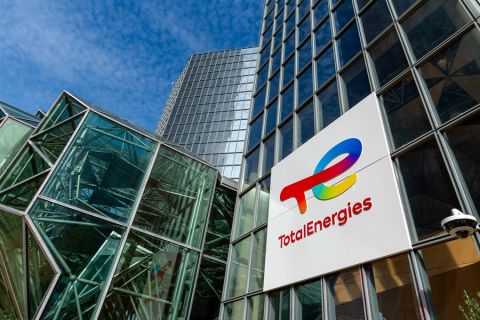Due to constrained well economics, it is vital for operators to acquire cost-effective information quickly to allow reservoir engineers and petrophysicists to make more informed decisions about the reservoir while at the same time minimizing rig time, cost, and risk. Information such as real-time pressure data, downhole fluids analysis, and representative fluid samples that are captured and returned to surface in the shortest time provide critical resource information for use in immediate and long-term completion decisions.
Today’s wireline formation testing technologies allow a more comprehensive characterization of reservoir fluids than ever before. Innovations in fluid analysis and sample-capture techniques allow service companies to collect truly representative formation fluid samples. Baker Hughes’ RCX Sentinel service can deliver cleaner formation fluid samples in less time than conventional fluid sampling methods.
The service is part of a broader fluid characterization portfolio, which will soon include the FASTrak LWD service, winner of the 2013 Offshore Technology Conference Spotlight on Technology award. Together, these services allow operating companies to make early assessments of the commercial viability of projects and, in many cases, can negate the requirement for expensive well tests. The enhanced quality of fluid sample purity and of compositional and phase integrity allows engineers to make early decisions regarding the nature and scale of production facilities and to reduce the risk of subsequent intervention or production facility redesign.
How it works
In traditional wireline fluid sampling a modular wireline formation tester is lowered into the wellbore by an electromechanical cable or in combination with drillpipe and is positioned adjacent to an earth formation containing native fluids. A probe is extended from the formation tester, and pumpout modules are used to move formation fluids from the formation into the tool, through a downhole fluid analyzer, and then into the wellbore. Once engineers evaluate the data from the downhole analyzer and are satisfied with the fluid properties, the fluids can be diverted into sealable bottles for recovery to the surface. The modular design can be configured to meet specific reservoir characterization objectives and to recover up to 52 individual samples during a single trip into the well.
However, this standard sampling method can suffer from equilibrium effects, where even extended pumping times and volumes cannot reduce the mud filtrate below a minimum or irreducible level. This irreducible filtrate impurity is drawn into the standard inlet around the edges of the single probe inlet. One solution to this problem is to use a focused sampling technique, where samples can be delivered at a much lower terminal purity and more quickly, with savings of 50% or more in operational time.
In focused sampling the standard method is refined to include a probe module featuring a packer with two circular fluid inlets arranged concentrically around a common center. When the packer is extended against the formation, fluids are drawn separately into each of the inlets and maintained separately inside the tool string via discrete flowlines and pumpout modules. The separate perimeter inlet acts as a barrier to the migration of mud filtrate toward the central inlet. Independent control of separate fluid pumps connected to each inlet provides an optimum rate of fluid intake into each inlet. By optimizing the flow rates at the formation/borehole interface, the RCX Sentinel service isolates the contaminated fluid into the perimeter inlet and allows cleaner fluid to pass to the inner flow area, thereby obtaining pristine samples. Additionally, the ability to open and close tanks quickly and without interruption to the sampling process ensures that the pure fluid flow achieved reaches the single-phase tank without disturbance.
Designed to maximize wellsite effectiveness and optimize operations in high-cost and critical environments, the service also is an HP/HT-rated application – up to 375°F (191°C) and 25,000 psi.
Service history
Testing has been ongoing for more than 12 months in several key locations such as the Gulf of Mexico, the UK, and Norway. More than 10 runs have been completed without a single nonproductive time occurrence, with more than 100 samples collected and with time savings of up to 80% when compared to standard methods. Surface analyses also have shown that average sample contaminations are substantially improved, with more than 95% of sample chambers having less than 5% impurities and with most having less than 2%.
Case history
For many years, a major North Sea producer had used standard fluid sampling services to efficiently map heterogeneous hydrocarbon composition and hydrogen sulfide content across a large field. To recover samples of 95% purity or better, a single sampling station typically took several hours to complete and generally involved the pumpout of more than 200 liters (53 gal) of contaminated fluid to the wellbore before samples were captured into single-phase chambers. During a four-well field test campaign, the RCX Sentinel and In-situ Fluids eXplorer services were deployed to capture almost 50 fluid samples. Analysis of the samples showed that 98% purity could be reliably obtained, and with time and pumpout volume reductions of up to 80%, it allowed faster and more accurate decisions to be made regarding the well completion.
Recommended Reading
TotalEnergies to Acquire Remaining 50% of SapuraOMV
2024-04-22 - TotalEnergies is acquiring the remaining 50% interest of upstream gas operator SapuraOMV, bringing the French company's tab to more than $1.4 billion.
Is Double Eagle IV the Most Coveted PE-backed Permian E&P Left?
2024-04-22 - Double Eagle IV is quietly adding leases and drilling new oil wells in core parts of the Midland Basin. After a historic run of corporate consolidation, is it the most attractive private equity-backed E&P still standing in the Permian Basin?
Brett: Oil M&A Outlook is Strong, Even With Bifurcation in Valuations
2024-04-18 - Valuations across major basins are experiencing a very divergent bifurcation as value rushes back toward high-quality undeveloped properties.
Marketed: BKV Chelsea 214 Well Package in Marcellus Shale
2024-04-18 - BKV Chelsea has retained EnergyNet for the sale of a 214 non-operated well package in Bradford, Lycoming, Sullivan, Susquehanna, Tioga and Wyoming counties, Pennsylvania.
Civitas, Prioritizing Permian, Jettisons Non-core Colorado Assets
2024-02-27 - After plowing nearly $7 billion into Permian Basin M&A last year, Civitas Resources is selling off non-core acreage from its legacy position in Colorado as part of a $300 million divestiture goal.




